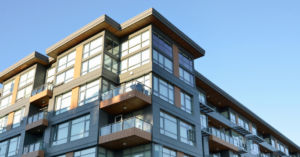September Conference Circuit Takeaways
Last month we posted a commentary titled “The Residential Ship Remains Steady” which provided a mid-quarter (July/August) update on our constituent companies and the state of the rental housing market. Our key takeaway from the September conference circuit and numerous company updates was that residential REIT operating results for 3Q and the balance of 2022 would be in line with management and investor expectations with all eyes keenly focused on preliminary 2023 guidance. July/August leasing activity in the traditional apartment sub-sector achieved low-teens blended rental rate growth and only a slight reduction in occupancy, with landlords favoring rent growth over occupancy. Industry leaders have taken pains to articulate the historic strength across the sector and also to forewarn that 18-20% rental rate growth, which was commonplace earlier in the year, is simply not sustainable nor healthy for the industry which has typically achieved consistent and predictable rent growth of 2.5-3.5% per annum. We are all familiar with the havoc that the pandemic caused in the early quarters of its onset and the parabolic recovery which began in mid-2021 as vaccines gained the upper hand and regional economies slowly started to reopen. The ensuing pent-up demand for housing along with job creation, fiscal handouts and free money from the Federal Reserve all contributed to the carnival-like atmosphere, not just in housing but across the economic landscape. While none of this should come as a surprise to our readers, there have been numerous press reports in recent weeks bemoaning the pending downturn in rental housing.
Tailwind -> Headwind
The “base effect” on year-over-year operating results was one factor identified as a tailwind in the second half of 2021, and simple math warned us that this tailwind would pivot to become a headwind by the second half of 2022. We have described this as the “moderation” phase of the cycle and it is playing out largely as expected. The well-regarded firm RealPage, which specializes in all things’ apartments, recently noted a sharp reduction in net absorption for the third quarter and while they attributed this to “renters hitting an affordability ceiling”, they also point out that this response is hard to defend given there has been no corresponding weakness in other key data points such as rent collections, downgrading to lower price point product or a diminution in renter incomes.[1] We have written and spoken about the affordability gap between renting and homeownership, which has only widened over the course of 2022 as housing prices and now rising mortgage rates have put homeownership further out on the horizon for those renters aspiring to own a home. This said, a more encompassing challenge of what we’ll call “consumer fatigue” could be setting in as inflation wears down purchasing power for all working Americans…a phenomenon that does not show up in employment data or rent-to-income ratios, but weighs on consumer psyche nonetheless and could be causing demand destruction in the form of potential renters seeking out alternative living arrangements such as “doubling up” and moving in with relatives.
Apartment REIT Returns
With apartment REIT total returns down 29.5% year-to-date (through Oct. 7th) and down over 14% over the past 30 days[1], we believe that a substantial amount of skittishness has been priced into the group along with a dire outlook for 2023 and beyond, which we do not believe will materialize.
Blended Leasing Spreads
The REIT Research team at Evercore ISI is forecasting blended leasing spreads for apartments under coverage (AVB, CPT, EQR, ESS and UDR) to moderate to 12.1% for 3Q22 and 8.3% for 4Q22, down from 14.5% for 1H22. Blended leasing spreads for 2023 are forecast to normalize to a range of 3.4% to 4.2%, not far off from historic levels. We would also note that occupancy levels are forecast to remain high through 2023 at 96% and same-store Net Operating Income is projected at 8.1%, a strong data point on all accounts, but notably lower than the historic milestones achieved in 2022. [3] An important talking point on upcoming earnings calls will be this notion of demand destruction and what impact current economic conditions are having on overall demand, especially in light of the 3Q commentary provided by RealPage.
Outlook
In summary, we believe that the rental housing segment of the REIT market will live up to its reputation for providing investors with safe and predictable cash flow and dividend growth for the balance of 2022 and beyond. This said, there is no denying the dangerous externalities which have festered and grown over the course of the year and while solid fundamentals, operational prowess and disciplined balance sheet management add to the resiliency of the property type and our constituent companies, the sector does not operate in a vacuum and is not immune to the disturbances which we read and hear about on a daily basis.
Definitions:
AVB – AvalonBay Communities
CPT – Camden Property Trust
EQR – Equity Residential
ESS – Essex Property Trust
UDR – UDR, Inc.
Footnotes:
[1] Realpage.com/analytics/is-apartment-demand-weakening-due-to-high-rents-look-for-these-3-signals/
[2] Evercore ISI: Real Estate – 3Q Resi Preview: Do The Prints Even Matter? Its All About Next Year’s Growth Outlook; Steve Sakwa and Team; October 9, 2022
[3] EvercoreISI: Real Estate
Disclosures:
Investors should consider the investment objectives, risks, charges and expenses carefully before investing. For a prospectus or summary prospectus with this and other information about the Fund, please call (800) 693-8288 or visit our website at www.armadaetfs.com. Read the prospectus or summary prospectus carefully before investing.
Investments involve risk. Principal loss is possible.
Through its investments in REITs, the Fund is subject to the risks of investing in the real estate market, including decreases in property revenues, increases in interest rates, increases in property taxes and operating expenses, legal and regulatory changes, a lack of credit or capital, defaults by borrowers or tenants, environmental problems, and natural disasters.
Investment Objective: The Home Appreciation U.S. REIT ETF (the “Fund”) seeks total return.
Distributed by Foreside Fund Services, LLC.



